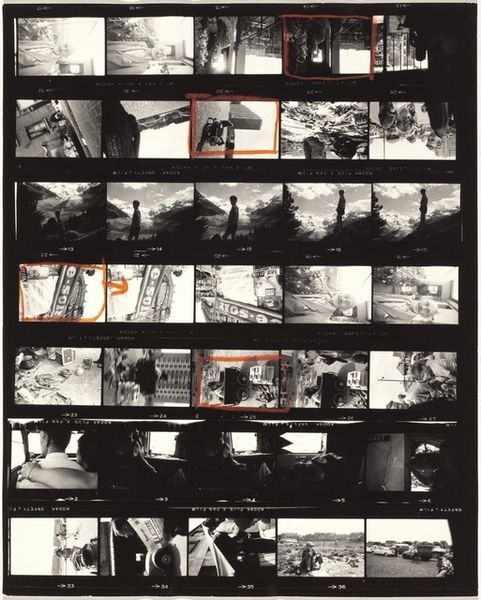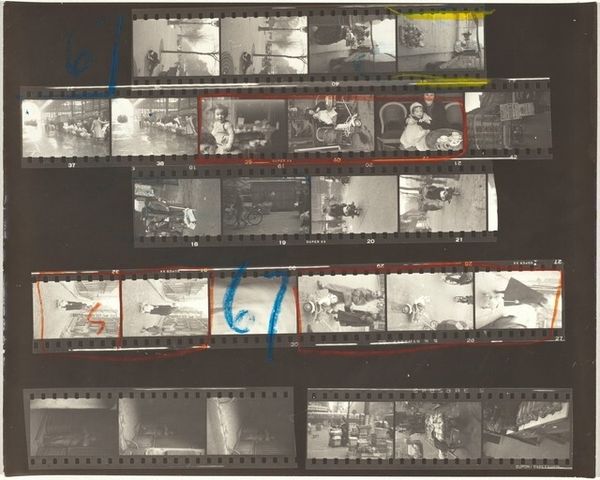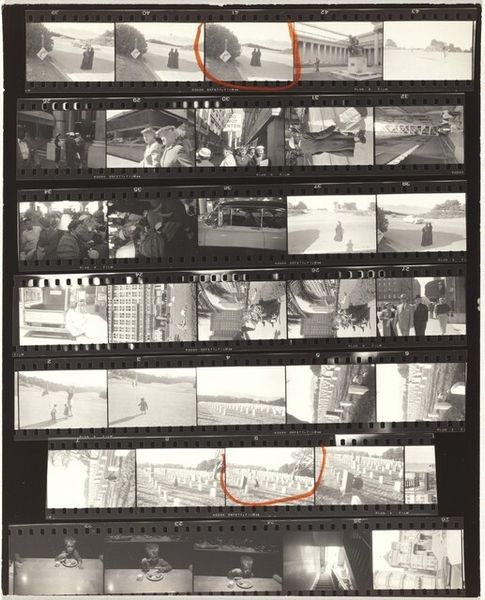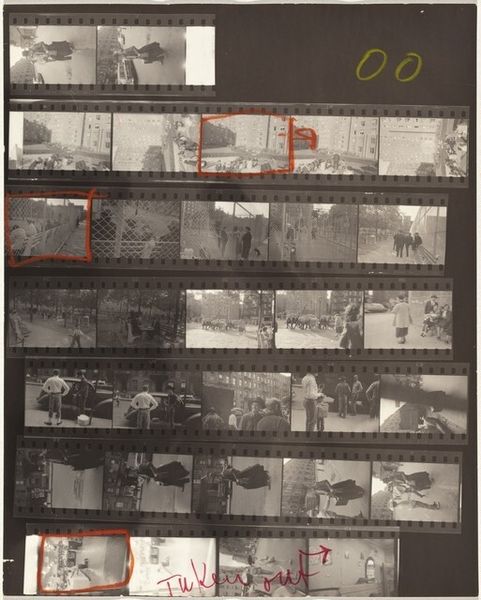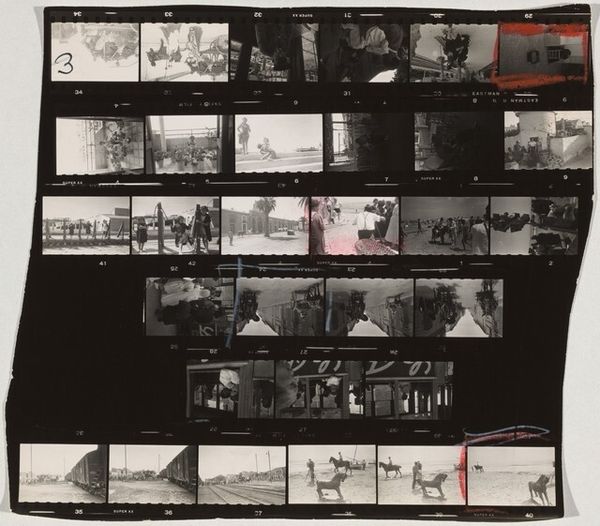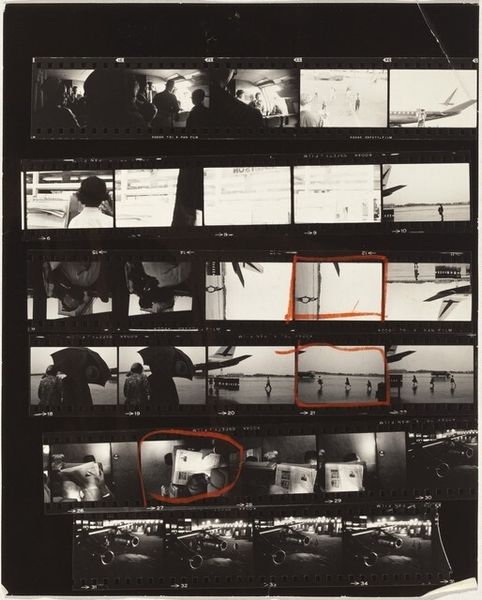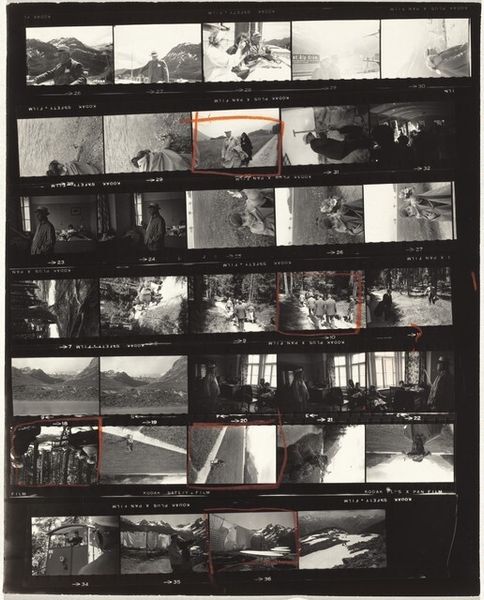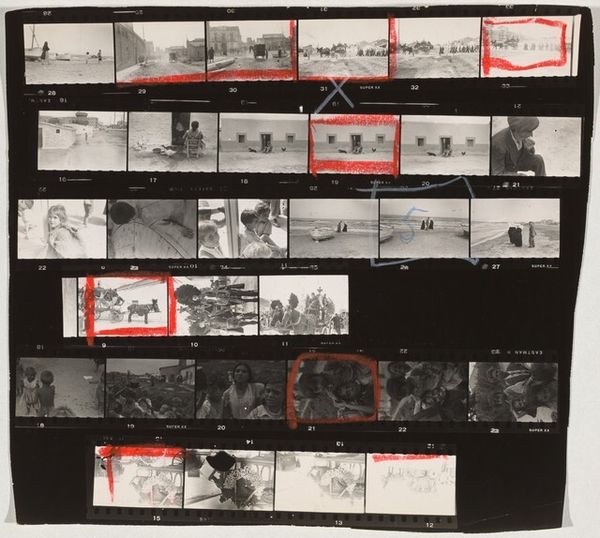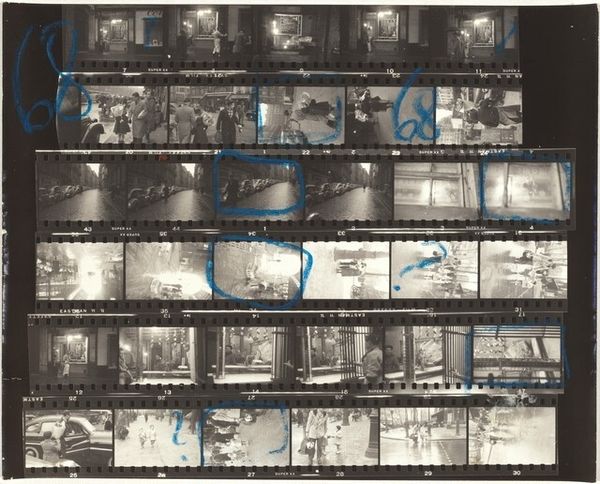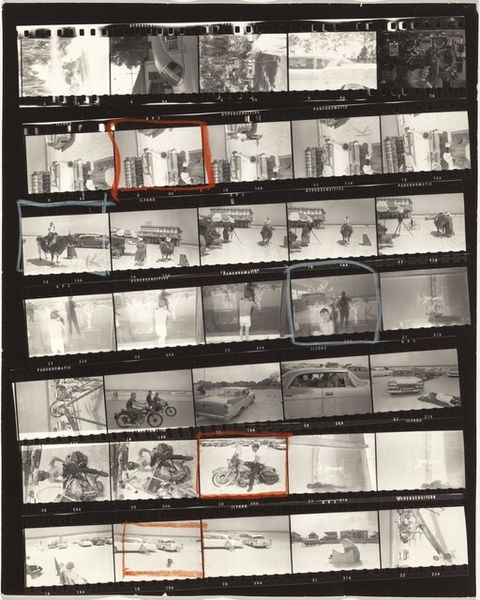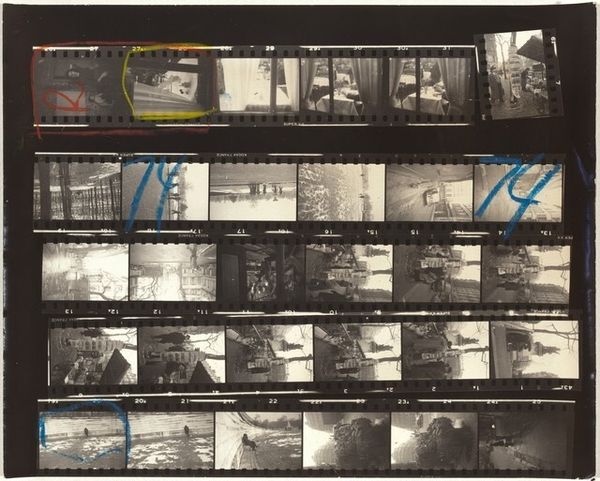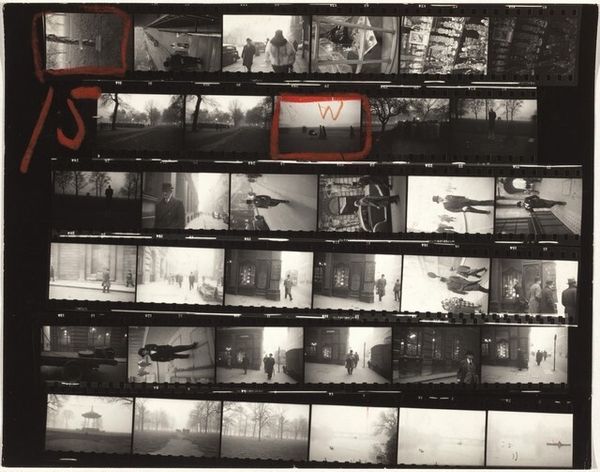
photography, gelatin-silver-print
#
portrait
#
archive photography
#
street-photography
#
photography
#
gelatin-silver-print
#
modernism
Dimensions: overall: 20.2 x 25.3 cm (7 15/16 x 9 15/16 in.)
Copyright: National Gallery of Art: CC0 1.0
Editor: So, we're looking at "San Yu in his studio—Paris 87B," a gelatin-silver print made by Robert Frank sometime between 1951 and 1952. It’s a contact sheet, almost like a glimpse into the artist's process with handwritten markings... what do you make of its raw and intimate quality? Curator: The contact sheet offers a privileged peek into Frank's editorial process. It's less about a single, perfect image, and more about the act of selecting, editing, and imbuing meaning onto the image. Consider that Frank was working against the established conventions of pristine, objective photojournalism, particularly dominant within institutions like LIFE magazine at the time. How do these markings complicate the supposed truthfulness of documentary photography? Editor: That's interesting. I guess the markings reveal a more subjective truth? The artist's hand literally on the image? What does this choice, this working-against-the-grain, tell us about Frank's intentions? Curator: Precisely. Frank was deeply concerned with social realities, yes, but equally, if not more, invested in representing personal and emotional truths. He was part of a wave of postwar photographers rejecting the "decisive moment" for a more intuitive, immediate style. Do you see how the street photography thematic interacts with the Modernist style, in his work? Editor: Yes, it’s not just a simple recording; it is a curated version of reality... Curator: The selection, cropping, the very presentation as a marked-up contact sheet – it's all a statement on the photographer's role not as a detached observer, but as an engaged interpreter, someone wrestling with the complexities of his subjects and his own perspective. In the fifties, showing the mess behind the image made photography become less institutional. How does this affect the viewer? Editor: I hadn't considered the "mess" aspect to mean it was an intentional move...It definitely gives it a different vibe and now I see the "truth" revealed behind the artistic intentions, Thank you. Curator: And hopefully it challenges our assumptions about photography's relationship to truth and objectivity. There are many intentions at play and as such this becomes a fascinating point of access!
Comments
No comments
Be the first to comment and join the conversation on the ultimate creative platform.
